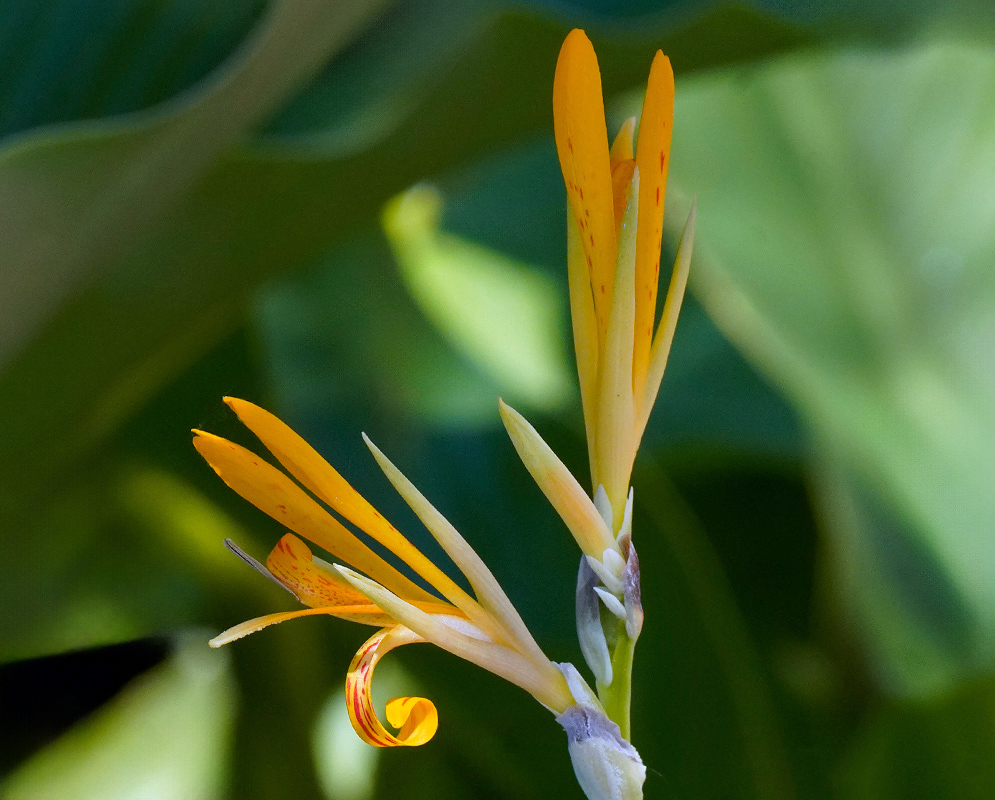This post has 11 Simple Fields-fields attached. Show fields.

Canna paniculata is native to montane regions of Central and northwestern South America. It is a tall, perennial species forming robust canes from rhizomes and flowering at heights that can exceed 8–12 feet. The species name refers to its branched inflorescence: instead of a simple spike, the flowering stem divides into a loose, open panicle with primary and secondary branches, each carrying many buds and successively opening flowers, a habit that helps separate it from simpler-flowered species cultivated in gardens. The showy parts are staminodes rather than true petals and are notably narrow and elongate—often about 1–2 in long—giving blooms a starry, spidery look rather than the broad, paddle-shaped form seen in common hybrids. Flowers range from yellow-orange to orange with fine red speckling toward the tips; a curved, ribbon-like staminode (labellum) may coil as shown in the photo. Bracts are green and not papery, and the upright buds are long and tapered. Photographed in Colombia.

